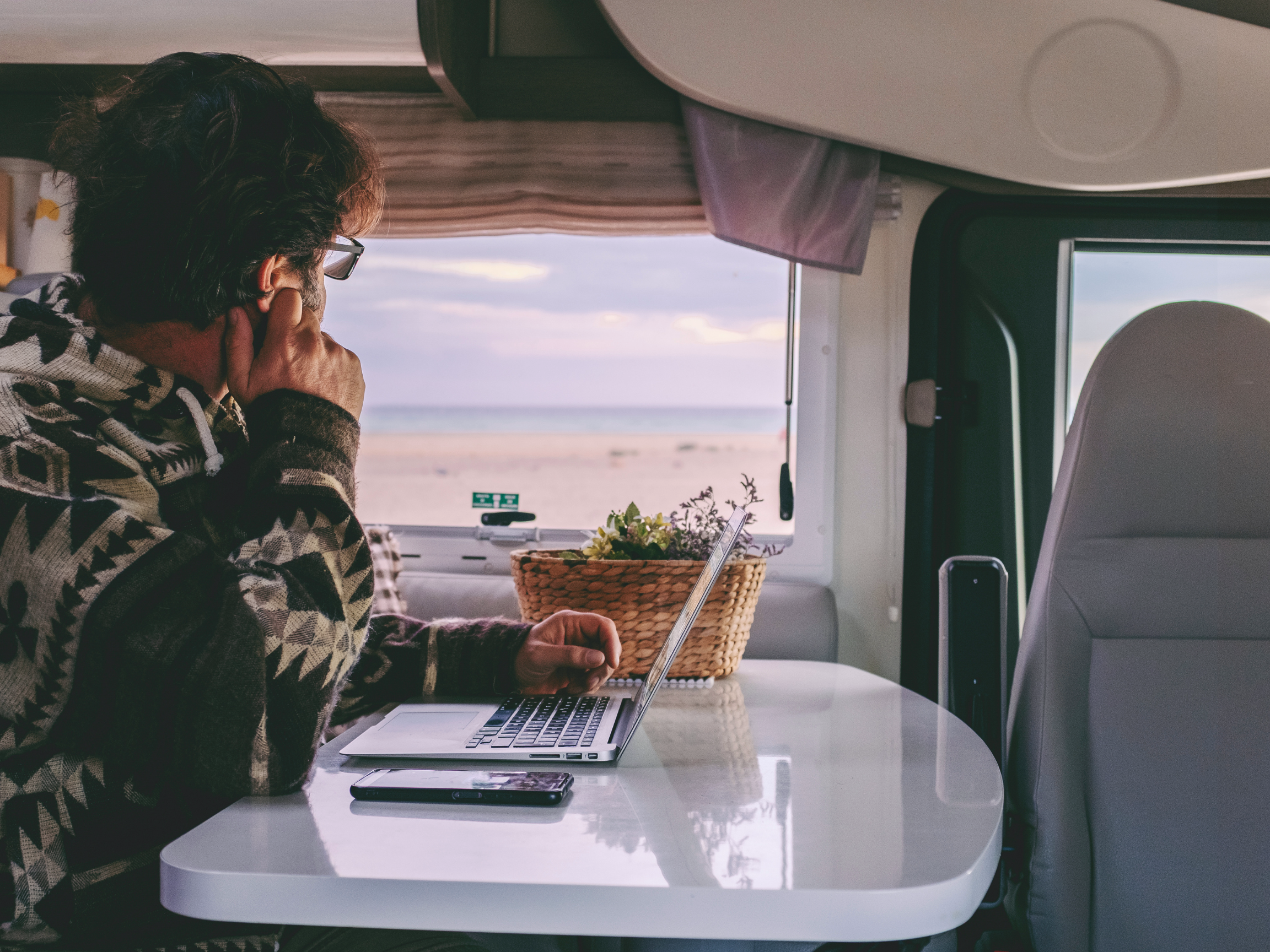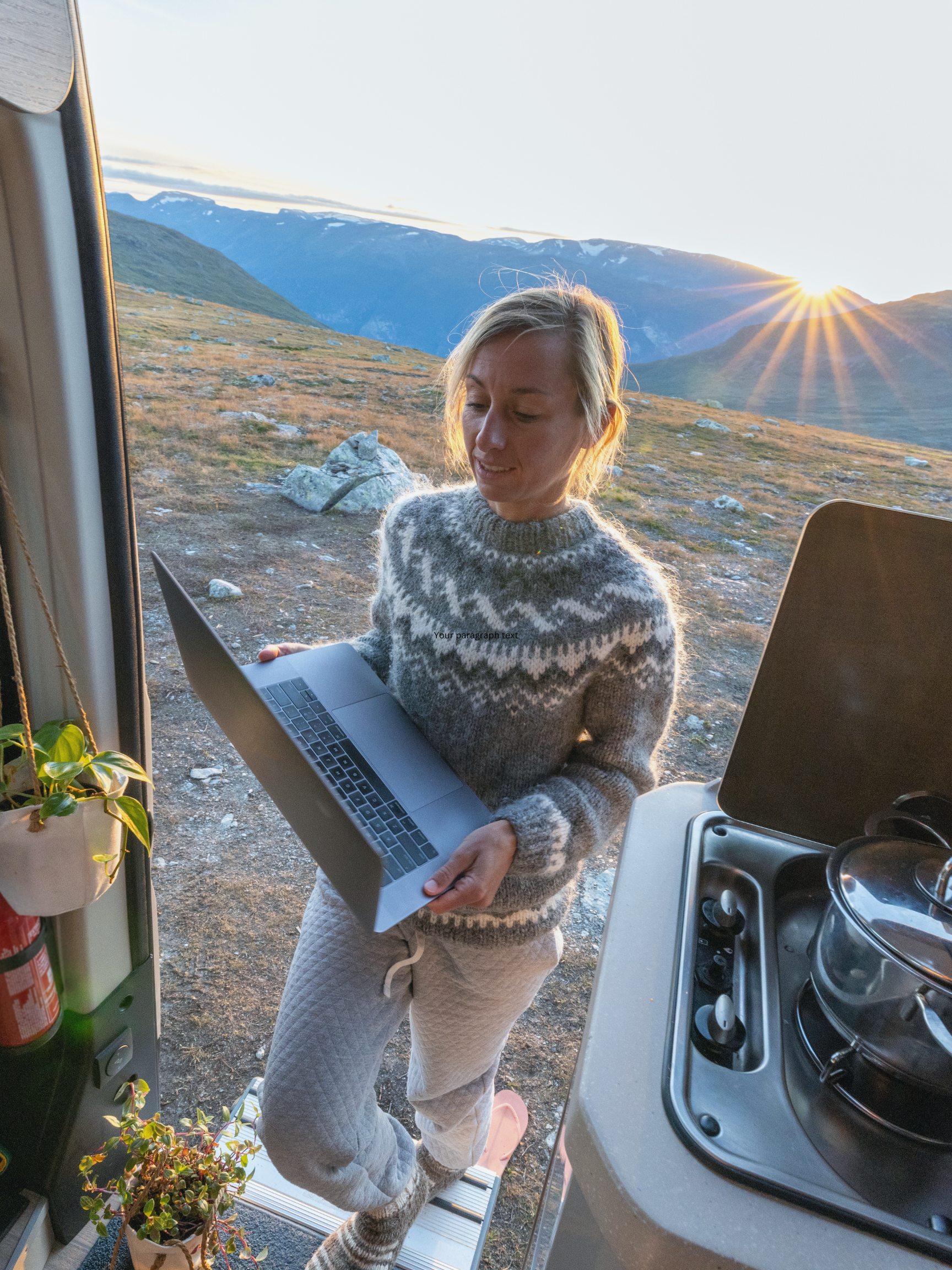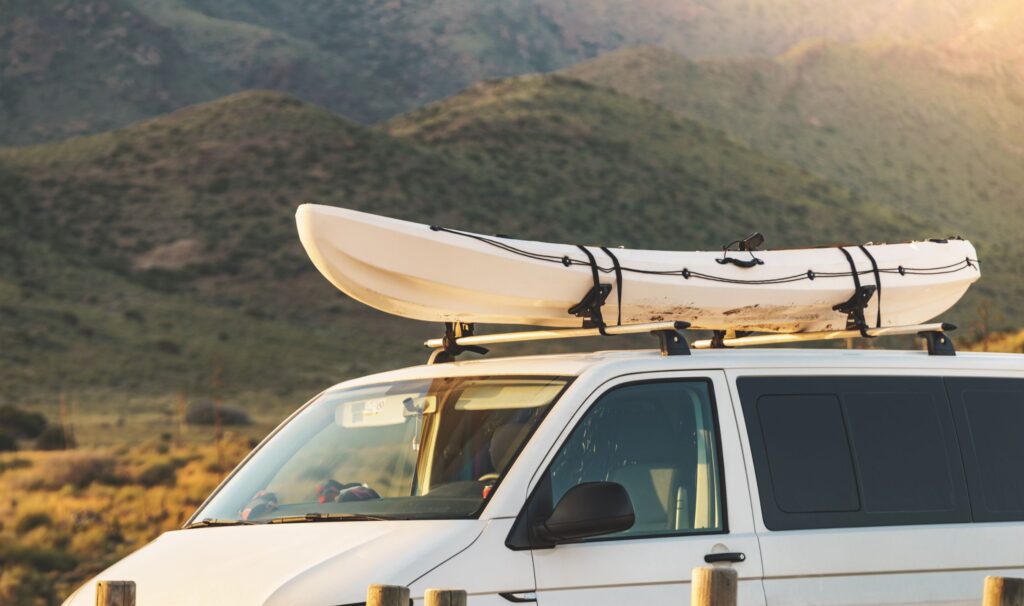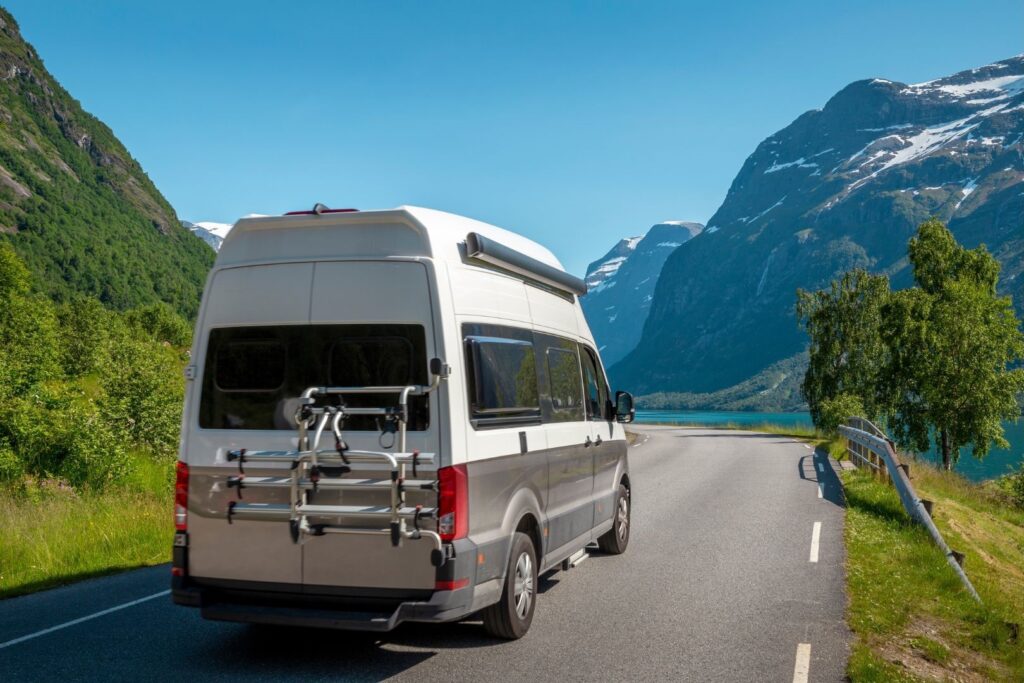If you plan to live in your van full time and make the digital nomad and remote work lifestyle yours, you will need to get your hands on a reliable internet connection. Van life internet access seems daunting, but nowadays it’s very easy to get a good, strong internet connection and unlimited data almost anywhere you go.
In this article, we’ll look at the best options for van life internet access, and discuss the pros and cons of each solution.
Table of Contents

Cell Phone Data
This is probably the easiest way to get internet in your van. Most people are already paying for some kind of cell service, and it’s easy enough to simply turn on data sharing on your phone and connect multiple devices to it.
The primary problem with using a cell phone hotspot is speed. Cell phone data is usually much slower than data from a WiFi network or even from a MiFi device (which we’ll talk about later.) Also, hotspot data chews through your data very quickly, and you may end up hitting your data limit if you use it frequently.
This is because a laptop loads significantly more data than a cell phone, where pages are optimized for mobile and data usage is limited. A computer loads full-size images and pages that aren’t optimized for a mobile internet connection, so you could end up using significantly more data than you’re used to.
And, of course, there are remote areas where getting a strong cell signal simply isn’t possible.

Mobile Hotspot Devices
A mobile hotspot device (MiFi) is a small router into which you can insert a SIM card. It works from a cell signal and provides data to surrounding devices much like cell phone hotspot data. The difference is that it can be slightly faster than just using a cell phone, and it won’t drain your phone battery.
You can set up many mobile hotspot devices to fall back to using WiFi if it’s available and only use cell phone signal when necessary. Combined with a WiFi booster or satellite internet option, this can be a good, robust system for having multiple data solutions.
Cell Signal Boosters
A cell signal booster enhances the signal of nearby 4G and 5G networks to give you more bars in an area with weak signal. One such product is the WeBoost cell signal booster, which receives signal through an outside antenna mounted to the roof of the van. The signal is then passed to an inside antenna, to which cell phones and other devices can connect.
Keep in mind that a signal booster only works when there is a reliable cell signal to be boosted. You can’t expect fast and reliable internet via cell signal way out in the middle of nowhere where there is no coverage.

WiFi Hotspot Data
Another option, if you’re in an area that has them, is to take advantage of internet cafes, local coffee shops, libraries, and public WiFi. Not only is this a nice way to get out and explore the places you’re visiting, but you’ll be supporting local businesses (and probably drinking some great coffee!)
The downside to this solution is that WiFi hotspots can be unsecured, leaving you exposed to hackers if you don’t use a VPN (Virtual Private Network.) They can also get very slow when lots of people are on them, or work spottily. It can also get quite expensive to buy a double latte and a croissant every time you want to get online.
Signal Booster
One way to get more from public WiFi spots is to get a WiFi booster for your van. This is an antenna that picks up the signals of nearby WiFi networks and amplifies them, allowing you to access them from further away (for example, from your van in the parking lot or across the street.)
The downside to this solution is that it is very complicated to set up, requiring some knowledge of IT, firewalls, routers, etc. You’ll also still need the WiFi password for the network you’re accessing, so you will at least need to buy something from the business the first time you log on (and keep in mind that using a business’s internet signal without paying for it is not super cool.)

Satellite
The recent addition of Starlink satellite internet to the available van life internet options has opened up a whole new world for van lifers looking to get internet on the road. Starlink is reasonably priced compared to cell data, and works pretty much anywhere you have a clear view of the sky (even in the most remote areas.)
In fact, the problems with Starlink are the exact opposite of the problems with other data solutions: it works best out in the middle of nowhere and sometimes struggles to connect when it is surrounded by obstacles like trees, buildings, or mountains. It also draws a lot of power, so if you aren’t super confident about your power setup, you may want to consider another alternative.
That being said, Starlink is a game-changer for those looking to spend a lot of time in remote areas and get work done while they are out there. The unlimited data is super fast and super reliable and can be used for streaming, Zoom calls, or pretty much anything else you throw at it.


When You Don't Have Internet At All
Sometimes, no matter how much data you pay for, you end up in an area without internet. If you know you’re going to be way off grid and won’t be able to contact anyone, always make sure to follow basic safety protocols and tell a friend where you’re going.
It’s also a great idea to carry an SOS device like the Garmin InReach so you can get basic messages and send a signal for help if you need to.

Conclusion
If you’re considering full-time van life, WiFi doesn’t need to be a headache. Getting internet on the road is getting easier every day. With the advent of Starlink and good cell signal boosters, these days, it’s not unheard of to have high-speed data and unlimited WiFi in the most remote, off-grid, inaccessible areas. So what are you waiting for? Get out there and Find Your Outside™!


